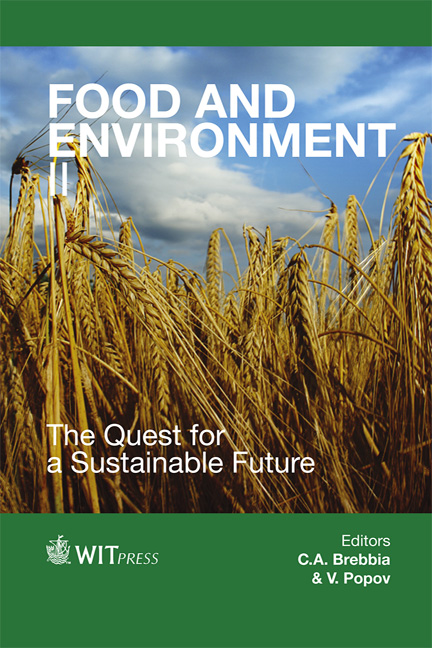Microbial Composition Of The Abattoir Environment And Its Health Implications On The Quality Of Fresh Cow Meat Sold In Akure, Ondo State, Nigeria
Price
Free (open access)
Transaction
Volume
170
Pages
9
Page Range
57 - 65
Published
2013
Size
54 kb
Paper DOI
10.2495/FENV130061
Copyright
WIT Press
Author(s)
D. V. Adegunloye
Abstract
This study was carried out to find the microbial composition of the abattoir environment and its health implications on the quality of fresh cow meat sold in Akure, Ondo State of Nigeria. A total of ninety samples were collected from five different abattoirs using sterile swabs and specimen bottles from the floor, slaughtering table, butchering knives, workers’ clothes, waste dump and waste water. One hundred grams of fresh meat were bought differently from each of the five abattoirs kept in a sterile polythene bag and were taken to the laboratory for analysis. Five hundred and twenty nine bacteria were isolated and identified from the samples; these organisms are common to all the samples including the meats. The bacteria with their frequency of isolation included: Aeromonas hydrophila (2.3%), Bacillus pumilus (7.6%), Bacillus subtilis (10.3%), Corynebacterium xerosis (16.8%), Escherichia coli (24.0%), Nitrococcus mobilis (3.4%), Proteus vulgaris (5.6%), Sarcina flava (1.1%) and Staphylococcus aureus (28.5%). Corynebacterium xerosis, Escherichia coli and Staphylococcus aureus were isolated from all the samples. The fungi with their frequency of isolation were Aspergillus sp. (33.0%), Saccharomyces (20.7%). The samples of high contamination were: waste water, waste dump and all the meat samples. Many bacteria and fungi were isolated from the meat and the environment in which the animals are slaughtered, some of these organisms can cause diseases in humans. The study show that the application of good
Keywords
abattoir, cow meat, environment, slaughtered, microbial effect, composition, health implication, quality, frequency, sold





